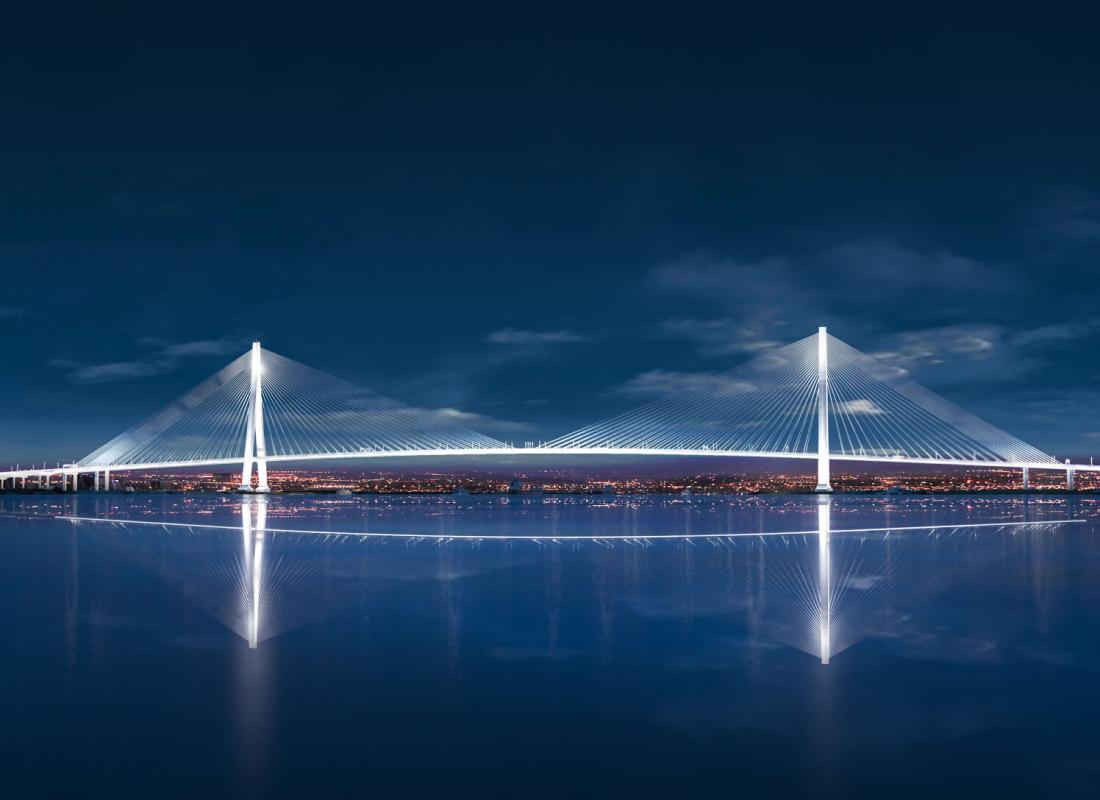The Gordie Howe International Bridge project is being delivered through a public-private partnership (P3). A P3 is a long-term performance-based approach to procuring public infrastructure where the private sector assumes a major share of the risks in terms of financing and construction and ensuring effective performance of the infrastructure, from design and planning, to long-term maintenance.
The P3 Model
A P3 is a co-operative venture between a public-sector entity and a private-sector partner for the provision of infrastructure or services. The partnership is built on the expertise of each partner that best meets clearly defined public needs, through the most appropriate allocation of resources, risks, and rewards.
The private-sector partner is often a consortium of companies with different areas of expertise.
Benefits of a P3 Model
The benefits of a P3 include:
- Risks are appropriately shared between the government and the private sector. For instance, cost overruns and delays to projects are shifted from the taxpayer to the private sector.
- A ‘whole life’ approach is used in the delivery of the project with the private sector having responsibility for the design and delivery of the project and also the long-term operations and maintenance.
- The private sector’s expertise, efficiencies and innovation are utilized in delivering large-scale infrastructure projects as specified by the public sector.
- The private sector is paid only on performance, aligning financial incentives for on- time, on-budget delivery and for the achievement of performance standards during the useful life of the asset.
- Utilizing a P3 model is good value for taxpayers. An independent value for money analysis demonstrated that the P3 model for this project results in a savings of approximately $562.8 million. That is 10.7% as compared to delivery of the project using traditional procurement methods. Read the Value for Money Report.
Project Implementation
WDBA’s private-sector partner, Bridging North America, is responsible for the design, build, finance, operation and maintenance of the Canadian and US Ports of Entry and the bridge and to design, build and finance the Michigan Interchange. Michigan will be responsible for the operations and maintenance of the Michigan Interchange.

The P3 Procurement Process
To select a private-sector partner to deliver the project components – the Canadian and US Ports of Entry, the bridge and the interchange to Interstate 75, Windsor-Detroit Bridge Authority (WDBA) ran a rigorous and fair procurement process. The procurement process was made of two main stages – the Request for Qualifications (RFQ) and the Request for Proposals (RFP). WDBA’s procurement process was designed for WDBA to choose a private-sector partner with the skills, experiences and resources necessary to design, build, finance, operate and maintain the Gordie Howe International Bridge project.
Stage One: Request for Qualifications (RFQ)
The purpose of the RFQ is to pre-qualify teams to design, build, finance, operate and maintain the Gordie Howe International Bridge project. RFQ submissions were evaluated on the respondents’ demonstrated experience and qualifications to deliver and finance large and complex infrastructure projects. Only teams short-listed from this process were invited to respond to a Request for Proposals (RFP).
During the RFQ stage WDBA held two introductory project meetings – one in Windsor, Ontario and one in Detroit, Michigan – for interested respondents. At the meetings, WDBA shared the scope of the requirements outlined in the RFQ. View the presentation.
WDBA also held Industry Days in Windsor and Detroit. Industry Days provided an opportunity for potential respondents to meet and network with local, regional and national contractors, suppliers and service providers. The Industry Days also provided the opportunity for local businesses to showcase themselves to potential private-sector Proponents on the Gordie Howe International Bridge project.
In addition, Public Information Meetings were held on Tuesday, November 17, 2015, in Windsor, Ontario and Wednesday, November 18, 2015, in Detroit, Michigan and provided an opportunity to learn more about the project, including how the procurement process to identify the private-sector partner works and an overall project update. Learn more about the meetings and view the materials.
At the end of the Request for Qualifications stage, an independent Fairness Monitor attested that the RFQ stage of the procurement process had been conducted in a fair, open and transparent manner. Read the Fairness Attestation.
Stage Two: Request for Proposals (RFP)
The RFP sets out the conditions and specifications required to undertake the project. It is issued to only pre-qualified Proponents selected through the RFQ stage who are asked to submit a formal proposal to design, build, finance, operate and maintain the project elements as identified in the RFP. Proponents submitted binding technical and financial proposals, including a fixed price and schedule. The RFP submissions were rigorously evaluated and a preferred proponent was selected. Subject to reaching Financial Close and to appropriate approvals, this team becomes WDBA’s private sector partner to design, build, finance, operate and maintain the Gordie Howe International Bridge project.
WDBA hosted two Business-to-Business meetings to allow the region’s companies and organizations to meet with the Proponents participating in the RFP stage.
These meetings provided an opportunity for local contractors, suppliers and service providers to network with the potential constructors and operators of the Gordie Howe International Bridge project. It is anticipated that many local resources will be required from both Windsor-Essex and Detroit to deliver the project. In addition to jobs created during the construction phase, the new bridge will result in many permanent jobs for the future operation of the crossing. For more information on the Business-to-Business meetings, click here.
At the end of the Request for Proposals stage, an independent Fairness Monitor attested that the RFP stage of the procurement process had been conducted in a fair, open and transparent manner. Read the Fairness Attestation.
On July 5, 2018, Windsor-Detroit Bridge Authority announced Bridging North America as the Preferred Proponent. For more information, click here.
On September 28, 2018, WDBA announced that a fixed-price contract had been signed with Bridging North America marking Financial Close and the completion of the P3 procurement process. For more information, click here.
Fairness Monitor
To ensure the procurement process was rigorous, fair, open and transparent, a Fairness Monitor was engaged. The Fairness Monitor observed the process including sessions with Proponents and evaluation, provided advice as needed and reported back to WDBA. The Fairness Monitor had no role in the evaluation or selection process other than to monitor its compliance with the stated procedures and to ensure a fair opportunity for all qualifying Proponents to participate in the selection process.
Timeline
The Request for Qualifications was issued on July 20, 2015.
The short-listed respondent teams were announced on January 20, 2016.
The issuance of the RFP to the Proponents was announced on November 10, 2016.
The Preferred Proponent, Bridging North America, was announced on July 5, 2018.
Financial Close was reached on September 28, 2018.
Status

The Procurement Process – at a glance
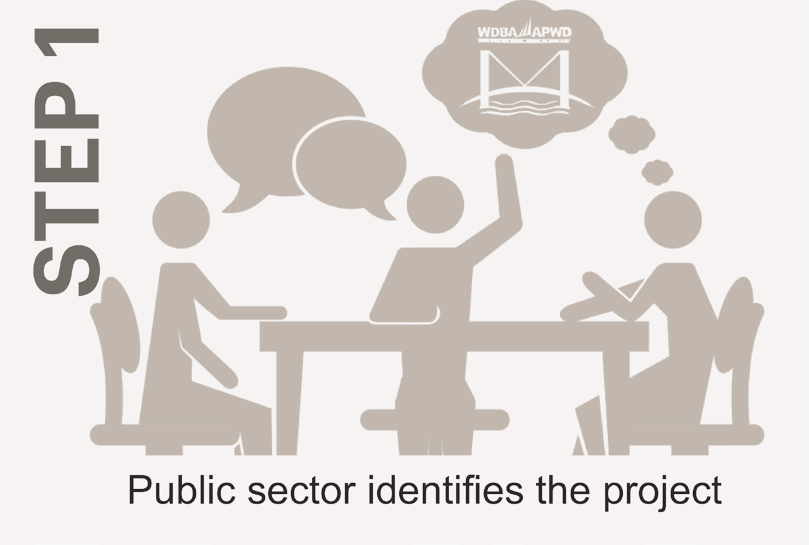
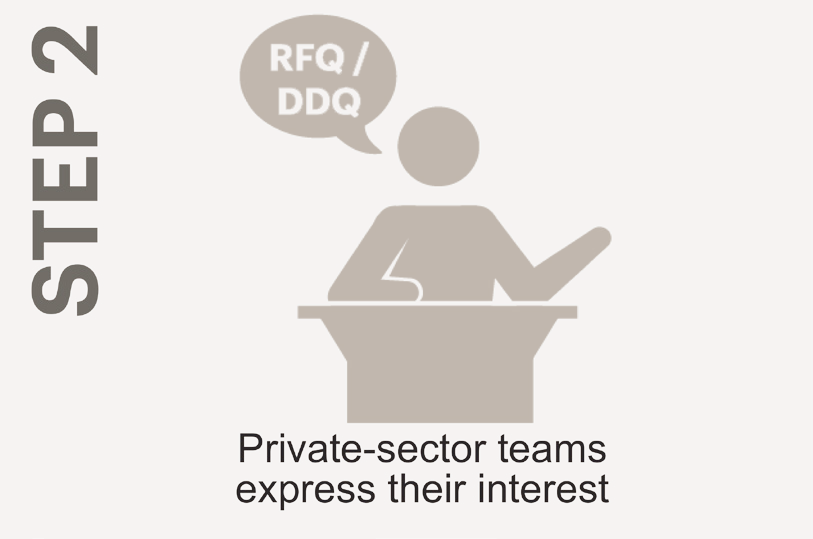
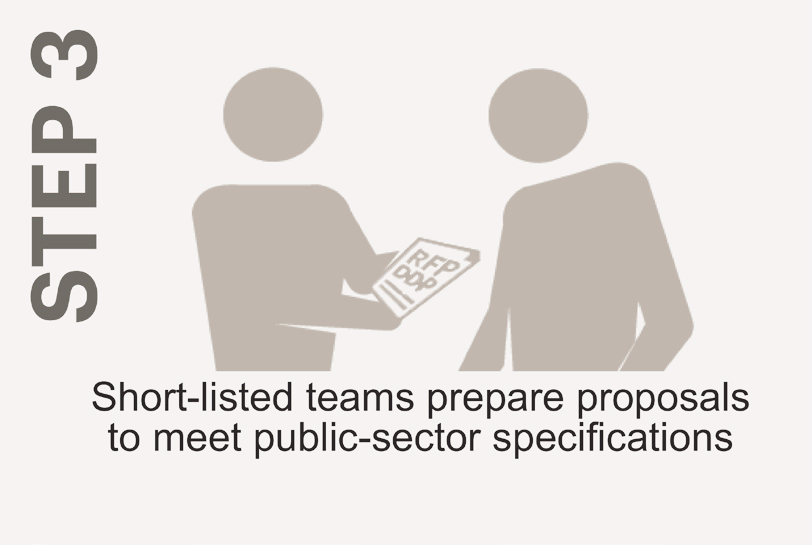
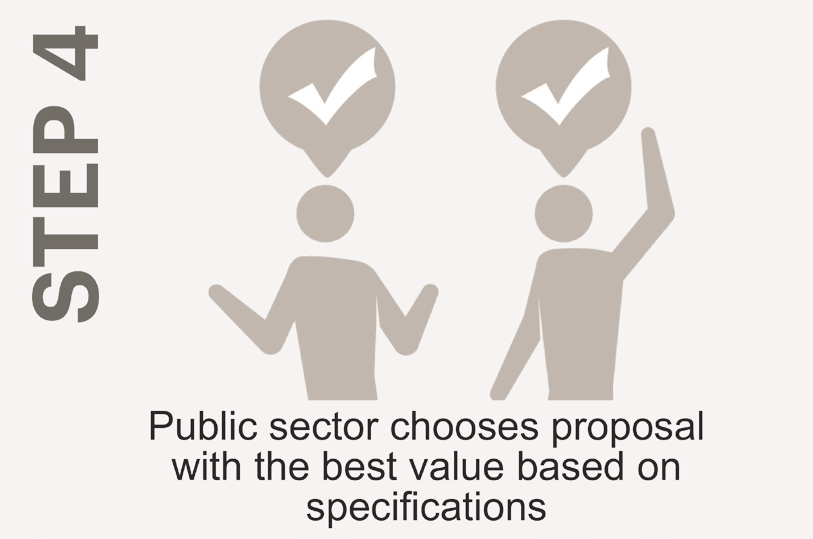
Request for Qualifications (RFQ)
The purpose of the RFQ is to pre-qualify teams to design, build, finance, operate and maintain the Gordie Howe International Bridge project. RFQ submissions were evaluated on the respondents’ demonstrated experience and qualifications to deliver and finance large and complex infrastructure projects. Only teams short-listed from this process were invited to respond to a Request for Proposals (RFP). The Request for Qualifications was issued on July 20, 2015.
Read the Request for Qualifications.
Request for Proposals (RFP)
The RFP sets out the conditions and specifications required to undertake the project. It is issued to only pre-qualified Proponents selected through the RFQ stage who are asked to submit a formal proposal to design, build, finance, operate and maintain the project elements as identified in the RFP. Proponents submitted binding technical and financial proposals, including a fixed price and schedule. The RFP submissions were rigorously evaluated and a preferred proponent was selected. Subject to reaching Financial Close and to appropriate approvals, this team becomes WDBA’s private sector partner to design, build, finance, operate and maintain the Gordie Howe International Bridge project. The issuance of the RFP to the Proponents was announced on November 10, 2016.
Read the Request for Proposals.
Project Agreement (PA)
WDBA and Bridging North America finalized a contract that legally binds and obligates both parties to their respective commitments. This contract, or Project Agreement, outlines criteria which govern the design, construction, operation and maintenance of the bridge and the Canadian and US project components.
Certain sections of the Project Agreement have been redacted according to provisions of the Access to Information Act. The exemptions applied are:
- Information obtained in confidence
- Federal-provincial affairs
- International affairs and defence
- Law enforcement and investigations
- Safety of individuals
- Economic interests of Canada
- Personal information
- Third party information
- Advice
- Testing procedures, tests and audits
- Solicitor-client privilege
Fairness Attestation
At the end of the Request for Qualifications and Request for Proposals (RFP) stages, an independent Fairness Monitor attested that the RFQ and RFP stages of the procurement process had been conducted in a fair, open and transparent manner.
Read the RFQ Fairness Attestation
Read the RFP Fairness Attestation
Value for Money Report
An independent value for money analysis demonstrated that the P3 model for this project results in a savings of approximately $562.8 million. That is 10.7% as compared to delivery of the project using traditional procurement methods.

